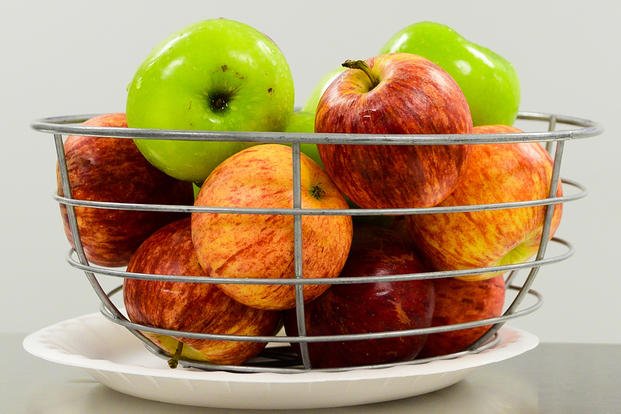This is the second article of the three-part series, Health Screening 101. The other two articles in the series:
Health Screening 101-Part 1: Introduction to Blood Tests/Insulin Resistance/Cholesterol Education
Health Screening 101-Part 3: Blood Testing
An exercise program should help you burn glucose and reduce fat. To do both effectively, it is recommended that you start off your workout with resistance training (weight training or calisthenics) for 20-30 minutes to burn your blood sugar (glucose) and glycogen first.
The higher your heart rate, the more sugar you are using for energy. This is anaerobic training, which requires your body to burn glycogen in order to produce energy for high-intensity exercise. Follow your anaerobic training with an easy-paced, fat-burning activity like walking, jogging, biking or swimming.
See below for a sample full-body workout with cardio program:
|
Typical Workout to Produce the Results You Need: Perform three days a week (every other day): Warm-up: Jog/walk fast or bike 5-10 minutes Weight Training Circuit: (full-body workout, nonstop movement) Repeat 2–3 times (depending on fitness level). Cardio option of your choosing: Walk, bike, elliptical, row, swim, etc., for 20-30 minutes at a steady pace On other days of the week: Just walk for 40-60 minutes. Other: Workout Ideas, Circuit Training 101 |
Diet recommendations
Many feel, including myself, that calories in must be less than calories out in order to lose weight and body fat. It is true, but it lacks the complete details.
If you have a meal of 400 calories of carbs or 400 calories of protein, it makes a difference. All calories are not the same, and your body will process them differently.
You have to be more detail-oriented with your food planning and focus on limiting or eliminating simple carbohydrates (sugars, breads, grains) from your diet and focus on lean meats, complex carbohydrates and limit fats to only the good fats (mono- and poly-unsaturated fats). Remember: Not all calories are equal.
The food plan that will be most beneficial for your issues is a low-carb diet, not a no-carb diet. There are many diets out there, but according to E.J. Greenwald -- co-founder of the SpecialtyHealth Wellness and Prevention Program -- the latest clinical trials suggest that America would benefit greatly from limiting sugars, refined grains and starchy vegetables. Greenwald and his team prefer a Paleo/low carbohydrate approach.
"Paleo nutrition is very solid," Greenwald said. "The addition of an exercise and sleep program makes it just perfect for our nation’s military and first responders. Insulin resistance, Type 2 diabetes and the obesity epidemics that are plaguing our country can be reversed.
"With 30%-35% of our first responders being insulin resistant, we have an incredible opportunity to make a huge paradigm shift. We can avoid so much human misery.”
Robb Wolf, author of "The Paleo Solution" and informational website www.robbwolf.com, agreed with Greenwald and recommended the following:
“Matching nutrition to the training needs of our military and first responders is a challenging proposition on the best of days," Wolf said.
Add to this an individual who is also insulin resistant, and we have an interesting “nut to crack.” Eating a higher-protein, lower-carb diet is critical in reversing insulin resistance and decreasing the blood markers associated with cardiovascular disease and Type 2 diabetes.
However, low carb can make intense PT not only miserable, but actually tough to do. The solution is twofold:
1. To the degree one eats dense carb sources, try to consume them immediately after a workout. The list below mentions carbs to avoid. Pull from the “paleo carbs” (starchy roots, tubers, etc.) but consume these only in your post-workout meal.
This will keep insulin levels low “most of the time,” only allowing for a larger carb meal post-workout. This will provide sufficient glycogen for hard training, but not so many carbohydrates that we make the insulin resistance worse. Other meals are protein, low glycemic load carbs (from the “Eat these carbohydrates” section) and healthy fats.
2. You may not have the same “pop” in your training when you initially start a program like this. You will need to experiment a little to see what your carbohydrate tolerance is. We want enough to help you train and recover, not so much that you are experiencing health problems. You also will notice that your carb tolerance will change, based on stress, sleep and training load. Shift work dramatically impacts carb tolerance, so you may need to eat a bit fewer carbs on those days, you do not get solid sleep.
Some suggested reading for diet ideas, recipes and background on the problems with the typical modern American diet can be found in the following books:
- "The Paleo Diet" by Loren Cordain
- "The Paleo Solution" by Robb Wolf
For a good guideline of foods to avoid and to eat see charts below:
 |
Avoid These Carbohydrates |
| Simple sugars/carbs like: common table sugar, dried fruit, fructose, doughnuts, any sweets, cookies, candy, dairy products, ice cream, pastries, fruit juice, soda, even diet soda, alcohol. No more sodas!!! | |
| Grains: breads, pasta, crackers, popcorn, crackers, white flour, white rice and corn (yes, actually a grain). Whole brown rice in limited quantities. | |
| Starchy veggies/fruits: pumpkin, sweet potatoes, potatoes, squash, peas, green beans, eggplant, yams. |
 |
Eat These Carbohydrates for Work / Exercise Energy |
| Small amount of fruit but eaten with protein meals is acceptable. Limit but do not eliminate: Berries, lemon, lime, blackberries, blueberries, cranberries, apples, bananas, grapes, peaches -- as a post-exercise treat to help you recover for the next workout. | |
| Raw or lightly cooked non-starchy vegetables like asparagus, broccoli, cabbage, avocado, green lettuce, romaine lettuce, peppers, onions, mushrooms, cucumber, spinach, zucchini, tomatoes and other greens. |
 |
Eat These Proteins |
| Create meals that are rich in lean proteins. Fresh fruits and vegetables should add into meals but eat along with some form of protein as well. Raw or lightly cooked vegetables are recommended. | |
| Proteins like: wild or grass-fed animals: beef, chicken, turkey, fish, crab, lobster, eggs and other game. Bison, alligator, deer, etc., are some lean sources of protein. |
 |
Eat These Fats/Oils |
| Create meals rich in good fats/oils. Fats/oils like: Good fats can be found in walnuts, almonds, olives, olive oils and flax seed oil are rich in the needed Omega 3 oils. | |
| A low-fat diet is not healthy, and you should limit the saturated fats so avoid butter, cheese, animal fat, other dairy products. |
 |
Drink More Water |
| Drink more water -- up to a gallon a day. Limit the salt and sodium-rich foods. |
*For complete lists and recipes, I recommend any of the books above.
Many people prefer not to go on medications if they can avoid them. However, often due to genetics -- and nothing we can control through diet and exercise -- we need a low-dose medication to lower cholesterols, triglycerides and lipoproteins.
Greenwald recommends the following for this case subject:
“In this patient, we elected to put him on a generic statin," Greenwald said. "This one costs only $10 every three months (Pravistatin). We recommended that because of the extremely high-particle count (lipoproteins 2,000+), which is a count in the 99 percentile of the population. Nothing lowers the particle count better than a statin, and we were happy the patient agreed with us. The plan, of course, is to re-check the particle count soon, in the next 3-4 months.“
We will follow up with the patient’s scores in a few months to check progress. See Health Screening 101: Blood Testing (Part 3).
If you have several of these symptoms, take a good look at your daily schedule and find out what is out of balance.
This game of stress is a delicate balance of hormonal responses from the speed-up and slow-down sides of our autonomic nervous system. Even though they are automatic responses to life that are difficult to control, we can control how we deal with stress with some serious thought and action.
Stew Smith is a former Navy SEAL and fitness author certified as a Strength and Conditioning Specialist (CSCS) with the National Strength and Conditioning Association. Visit his Fitness eBook store if you’re looking to start a workout program to create a healthy lifestyle. Send your fitness questions to stew@stewsmith.com.
Want to Learn More About Military Life?
Whether you're thinking of joining the military, looking for fitness and basic training tips, or keeping up with military life and benefits, Military.com has you covered. Subscribe to Military.com to have military news, updates and resources delivered directly to your inbox.



















